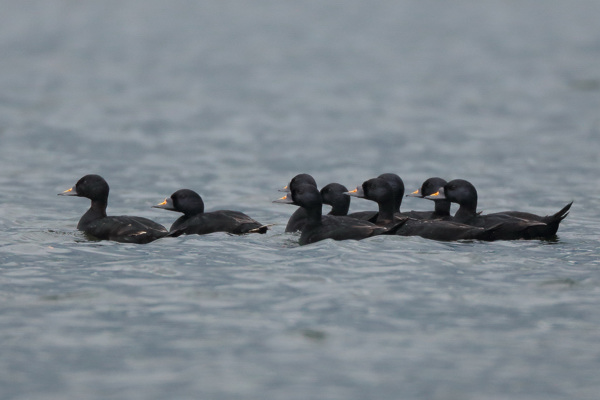Startling discovery for Britain's rarest breeding duck
Britain's most threatened breeding duck, Common Scoter, has been tracked using GPS to its wintering grounds for the first time — and the findings turn out to be rather surprising.
'Common' Scoter is tragically misnamed — there are only 40 breeding pairs left in Britain, all nesting in just a handful of places in the Scottish Highlands. Birds nesting on a single loch seem very tight-knit and are quite likely to be related, so it was expected they might migrate together to a similarly small area to overwinter.
But the first ever tracked birds have confounded Wildfowl & Wetlands Trust (WWT) researchers by heading in four different directions. One travelled the short distance to the Scottish coast, one flew hundreds of miles south to the Moroccan coast and the other two went to completely different locations in the Irish Sea.

Satellite tracking has revealed surprising results on the wintering locations of Common Scoter (Photo: Dave Kelsall)
WWT Research Officer Ed Burrell said: "It feels like this mysterious species wants to keep flummoxing any human interest in them. But in fact their winter wandering gives us some clues to help solve their problems.
"The fact they stay apart in winter is a bit like the Royal family never flying together: it means they can't all be affected by a single issue like a storm or oil spill. So that means that whatever is causing their decline is more likely to be in the summer when they're all together in the Highlands.
"That helps us to concentrate our investigations. Their breeding sites are managed by Scottish & Southern Energy and Forest Enterprise Scotland, who along with RSPB Scotland and SNH are working with us to try to crack the question of why this British species' future is so perilous."
The first four scoters were caught and fitted with trackers by WWT last year, but they've only now returned with the data. WWT researchers managed to re-catch the birds to retrieve the tags.
With the focus now on the scoters' breeding sites, the partnership of commercial, government and charitable organisations are stepping up their monitoring work in the Highlands. Nests and feeding areas are slowly being mapped while nest cameras have been installed, along with thermometers, to record the temperature under the egg clutches.
The species has always been rare in the British Isles but our breeding population has halved in the last twenty years. It is the only breeding wildfowl species to be red-listed in the UK.
Common Scoter remains one of the few British bird species about which so little is known. Their nests are well hidden and thinly spread across some of the most remote landscapes in Britain, which makes them difficult to find. Spending their winters at sea, often well offshore, makes them difficult to count. The global population is still generally thought to number over a million birds, although estimates of overall declines vary due to the logistical difficulties of monitoring them.

